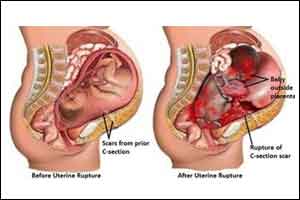- Home
- Editorial
- News
- Practice Guidelines
- Anesthesiology Guidelines
- Cancer Guidelines
- Cardiac Sciences Guidelines
- Critical Care Guidelines
- Dentistry Guidelines
- Dermatology Guidelines
- Diabetes and Endo Guidelines
- Diagnostics Guidelines
- ENT Guidelines
- Featured Practice Guidelines
- Gastroenterology Guidelines
- Geriatrics Guidelines
- Medicine Guidelines
- Nephrology Guidelines
- Neurosciences Guidelines
- Obs and Gynae Guidelines
- Ophthalmology Guidelines
- Orthopaedics Guidelines
- Paediatrics Guidelines
- Psychiatry Guidelines
- Pulmonology Guidelines
- Radiology Guidelines
- Surgery Guidelines
- Urology Guidelines
ACOG Releases Updated Guidelines on vaginal birth after cesarean

American College of Obstetricians and Gynecologists have released updated guidelines on vaginal birth after cesarean delivery (VBAC).The new recommendations which replace those published in August 2010 have been published in the November issue of Obstetrics & Gynecology.
- One of most significant observation is that 60% to 80% of women who attempt a trial of labor after cesarean delivery (TOLAC) achieve a successful vaginal birth.
- Therefore vaginal birth after cesarean delivery (VBAC) should be attempted at maternal care facilities that typically manage uncomplicated births if they are capable of performing emergency deliveries, according to updated guidance from the American College of Obstetricians and Gynecologists (ACOG).
- Women undergoing TOLAC should not attempt to deliver at home, as complications necessitating emergency medical care can be unpredictable.
- Patients with one previous cesarean delivery with a low-transverse incision are safe candidates for TOLAC.
The trial of labor after cesarean delivery (TOLAC) refers to a planned attempt to deliver vaginally by a woman who has had a previous cesarean delivery, regardless of the outcome. This method provides women who desire a vaginal delivery the possibility of achieving that goal—a vaginal birth after cesarean delivery (VBAC). In addition to fulfilling a patient’s preference for vaginal delivery, at an individual level, VBAC is associated with decreased maternal morbidity and a decreased risk of complications in future pregnancies as well as a decrease in the overall cesarean delivery rate at the population level (1–3).
However, although TOLAC is appropriate for many women, several factors increase the likelihood of a failed trial of labor, which in turn is associated with increased maternal and perinatal morbidity when compared with a successful trial of labor (ie, VBAC) and elective repeat cesarean delivery (4–6). Therefore, assessing the likelihood of VBAC as well as the individual risks is important when determining who is an appropriate candidate for TOLAC. Thus, the purpose of this document is to review the risks and benefits of TOLAC in various clinical situations and to provide practical guidelines for counseling and management of patients who will attempt to give birth vaginally after a previous cesarean delivery.
For more details click on the link:
http://journals.lww.com/greenjournal/Abstract/2017/11000/Practice_Bulletin_No__184___Vaginal_Birth_After.48.aspx

Disclaimer: This site is primarily intended for healthcare professionals. Any content/information on this website does not replace the advice of medical and/or health professionals and should not be construed as medical/diagnostic advice/endorsement or prescription. Use of this site is subject to our terms of use, privacy policy, advertisement policy. © 2020 Minerva Medical Treatment Pvt Ltd